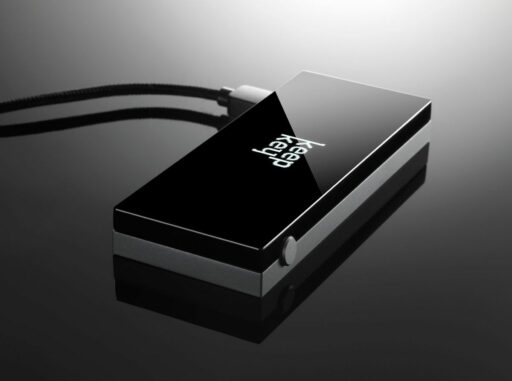The cryptocurrency exchange landscape is a dynamic and multifaceted domain, with Gemini standing out as a platform tailored to the needs of institutional investors. This article delves into the intricacies of the crypto exchange experience, focusing on Gemini’s institutional appeal, its position among exchange giants, and the evolving market landscape. We’ll also dissect fee structures and provide guidance on selecting the right exchange, considering the surge in crypto adoption during the pandemic and the critical role of user experience design.
Key Takeaways
- Gemini caters to institutional investors, particularly in the United States, with a focus on security and a user-friendly platform for high-stake investments.
- Binance dominates the global exchange market with a vast array of trading tools and features, while Kraken appeals to those seeking lower fees and a wide variety of cryptocurrencies.
- The user experience (UX) design of crypto exchanges is paramount in attracting and retaining users, especially as the market expands and the ‘crypto-curious’ demographic grows.
- Fee structures are a critical factor in trading decisions; Gemini employs a fee strategy that benefits high-volume traders but may be considered high for others.
- When selecting a crypto exchange, thorough research and an understanding of security protocols are essential, with the adage ‘Not your keys, not your crypto’ underscoring the importance of self-custody.
The Institutional Appeal of Gemini

Catering to the Big Players
Gemini has strategically positioned itself to cater to the institutional market, offering a suite of services tailored to the needs of large-scale investors. The exchange emphasizes security and compliance, ensuring that the big players can operate with peace of mind. Gemini’s interface is designed to facilitate efficient trading and investment strategies, accommodating the sophisticated requirements of institutional clients.
- Outsourcing Risk Manager, France
- Sales Executive, London
These roles highlight Gemini’s commitment to providing expert support and specialized services for its institutional clientele. The platform’s focus on security is further underscored by its weekly roundups, which keep users informed on the latest trends and shifts in the crypto market, including the comparison of features, interest rates, and rewards between Gemini and other players like BlockFi.
Gemini’s dedication to the institutional market is evident not only in its product offerings but also in its educational resources and customer support, ensuring that every aspect of the trading experience is optimized for the most demanding investors.
Security and Trust for High-Stake Investments
In the realm of high-stakes investment, security and trust are paramount. Gemini, understanding the gravity of these concerns, has implemented robust measures to ensure the integrity of its platform. The exchange’s commitment to regulatory compliance is evident in its proactive approach to evolving standards and legal frameworks.
The landscape of cryptocurrency regulation is complex and ever-changing. Gemini’s adherence to current laws and anticipation of future changes is critical for institutional investors who require stability and predictability in their investment platforms.
For institutional clients, the assurance of asset safety is non-negotiable. Gemini’s use of state-of-the-art security protocols, such as multi-signature technology and cold storage solutions, provides a fortified environment for digital assets. Additionally, the platform’s transparency mechanisms, like the use of distributed ledger technology, strike a balance between risk and asset visibility.
While the regulatory environment continues to shape the future of cryptocurrency exchanges, Gemini’s strategic approach to security and trust positions it as a reliable partner for institutional investors. The detailed comparison of features, interest rates, and rewards between Coinbase and Gemini assists users in choosing the best crypto exchange platform for themselves, further solidifying trust in Gemini’s offerings.
Navigating the User Experience for Professionals
For professionals in the crypto exchange market, the user experience (UX) is a critical factor that can significantly influence their efficiency and satisfaction. Gemini recognizes the importance of a seamless UX and has tailored its platform to meet the high standards expected by seasoned traders and institutional investors. The platform’s design emphasizes clarity, speed, and reliability, ensuring that users can execute trades with precision and without unnecessary delays.
- Streamlined onboarding process
- Intuitive interface with advanced trading tools
- Real-time data and analytics
- Robust API support for automated trading
The user interface is the bridge between technology and the professional user; it must facilitate a frictionless interaction that allows users to focus on their trading strategies rather than on navigating the platform.
Understanding that time is money in the world of trading, Gemini has invested in a UX that minimizes cognitive load and maximizes user engagement. The platform’s commitment to a professional-grade UX is evident in its continuous updates and responsiveness to user feedback, ensuring that it remains at the forefront of user-centered design in the crypto exchange industry.
Comparative Analysis of Crypto Exchange Giants

Gemini vs. Coinbase: The Battle for Institutional Dominance
In the arena of cryptocurrency exchanges, Gemini and Coinbase are vying for the favor of institutional investors. Each platform brings its own strengths to the table, with Gemini focusing on features tailored to the needs of large-scale investors, and Coinbase offering educational incentives that allow users to earn crypto while learning about trading.
While both exchanges provide robust security measures and a variety of tools for professional trading, they differ in their approach to regulatory compliance and market positioning. Coinbase’s recent legal challenges with the SEC highlight the complexities of operating within the US regulatory framework. In contrast, Gemini has managed to navigate these waters with a more conservative stance, emphasizing compliance and security.
The choice between Gemini and Coinbase may come down to a preference for either a more educational trading experience or a platform that prioritizes institutional features and regulatory foresight.
Understanding the nuances of each exchange’s offerings is crucial for institutions looking to make an informed decision. The table below succinctly compares key aspects of Gemini and Coinbase that are most relevant to institutional clients:
Binance’s Global Supremacy: Features and User Base
Binance stands as the world’s largest cryptocurrency exchange, a title it has earned through a combination of extensive features and a vast user base. Its trading platform offers a diverse range of services, including OTC markets, P2P trading, derivatives, staking, savings, crypto lending, and more, catering to a wide spectrum of crypto enthusiasts and professionals alike.
Despite facing legal challenges and rumors of internal asset shuffling, Binance has maintained a strong commitment to compliance, investing heavily in KYC and other regulatory tools. The exchange’s proactive approach to transparency and communication has been pivotal in navigating the complex regulatory landscape.
Binance’s resilience in the face of adversity is reflected in its ability to continue operations even as it confronts regulatory scrutiny and market rumors.
However, recent concerns have led to significant customer withdrawals, with reports indicating a $3 billion net outflow in a single 24-hour period. This underscores the volatile nature of the crypto market and the importance of trust in exchange stability.
| Feature | Description |
|---|---|
| OTC Markets | Facilitates large-volume trades without affecting the market. |
| P2P Trading | Enables direct transactions between users. |
| Derivatives | Offers futures, options, and other complex financial products. |
| Staking & Savings | Allows users to earn interest on their crypto holdings. |
| Crypto Lending | Provides loans using cryptocurrency as collateral. |
| BNB Token | Serves as the native cryptocurrency with various utilities. |
Kraken’s Competitive Edge: Fees and Cryptocurrency Variety
Kraken stands out in the crypto exchange landscape for its competitive fee structure and a broad selection of cryptocurrencies. With fees starting at 0.16% for market makers and 0.26% for market takers, Kraken appeals to both novice and experienced traders. The fee rates decrease for those with higher trading volumes, incentivizing frequent trading and larger transactions.
Beyond fees, Kraken’s extensive cryptocurrency offerings provide traders with the opportunity to diversify their portfolios. From well-known coins to emerging altcoins, Kraken supports a wide array of digital assets, catering to the varied interests of the crypto community.
In refining Kraken’s user experience, a focus on clear communication of fees and transaction intricacies is key. This transparency is crucial in building trust and ensuring that traders can make informed decisions without unexpected costs.
While Kraken’s strengths are evident, potential users should be aware of its limitations, such as customer support challenges and a complex fee structure that may require a learning curve for some. Despite these hurdles, Kraken’s low fees and cryptocurrency variety remain a significant draw for many in the crypto space.
The Evolving Landscape of Cryptocurrency Exchanges

Weekly Roundups: A Pulse on the Crypto Market
In the fast-paced world of cryptocurrency, staying informed is crucial. Weekly roundups serve as a vital resource for investors and enthusiasts alike, offering a snapshot of market trends, regulatory updates, and technological advancements. These summaries distill the week’s most significant events into digestible insights, helping readers make informed decisions.
The importance of these roundups cannot be overstated, as they provide a consistent and concise overview of the crypto landscape, which can be particularly turbulent.
Here’s a glimpse at the topics covered in recent weekly roundups:
- COVID-19’s ongoing impact on the crypto market
- Institutional adoption and its influence on crypto funds
- The role of major financial players like Goldman Sachs and JPMorgan
- Developments in crypto regulation and their implications for the industry
- The emergence of NFTs and their integration by major brands
Each roundup offers a unique perspective on the market’s direction and sentiment, highlighting the dynamic nature of the crypto ecosystem.
The Role of UX Design in User Adoption
The success of cryptocurrency exchanges hinges not only on their financial capabilities but also on the user experience (UX) they offer. An intuitive and seamless interface is crucial for attracting and retaining users, especially as the market grows more competitive.
Clearly and unambiguously communicating the status of a system to users is key to helping them bridge the gulf of evaluation; making important interactions easy to find also helps to overcome the gulf of execution.
Platforms must prioritize functionality, clarity, and user trust to encourage wider adoption. This involves simplifying complex processes and presenting information in a way that is accessible to both novices and experts. Below is a list of UX design principles that can significantly impact user adoption:
- Consistency in design to foster familiarity and ease of use
- Responsive feedback to user actions to build confidence
- Minimization of clutter to highlight essential features
- Accessibility for users with varying levels of expertise
By adhering to these principles, exchanges can bridge the crypto knowledge gap and create a more inviting environment for all users.
The Surge of Cryptocurrency During the Pandemic
The pandemic has been a catalyst for unprecedented growth in the cryptocurrency market. The crypto mania of 2022, largely fuelled by low-interest rates and generous COVID-19 stimulus by governments, has drawn a massive influx of new investors. Amidst economic uncertainty, cryptocurrencies like Bitcoin and Ethereum soared to new heights, with altcoins and meme tokens like Dogecoin also capturing the public’s imagination.
Amid the chaos, Bitcoin boasted a 26% increase last week—its best weekly gain since April 2019. Investors seeking refuge from the dramatic fall in equities markets have turned their attention towards digital assets.
The allure of cryptocurrency during this time was undeniable, as many individuals, confined to their homes and with more time to research, began investing in digital assets. The table below highlights the significant milestones during the pandemic that affected the cryptocurrency market:
| Date | Event |
|---|---|
| March 2020 | Bitcoin and Ethereum reach all-time highs |
| April 2021 | Dogecoin’s value increases by 12,000% |
| March 2021 | Bitcoin Reaches Nine-Month High Amid Banking Turmoil |
The surge in cryptocurrency was not just a fleeting trend; it represented a shift in how people viewed and interacted with financial markets during a global crisis.
Understanding the Fee Structures

Gemini’s Fee Strategy for Institutional Clients
Gemini’s approach to fees is tailored to accommodate the needs of institutional clients, with a focus on creating a cost-effective trading environment for high-volume traders. The exchange implements a dynamic fee structure, which varies depending on the product and usage level, ensuring that larger institutions can benefit from reduced costs associated with increased trading activity.
- For transactions under a certain threshold, Gemini charges a 1.49% trading fee along with a fixed transaction fee that can be up to $2.99.
- The fee schedule is further influenced by the payment method and the specific cryptocurrency being withdrawn.
- Notably, Gemini offers 0% fees for traders who reach a high volume, making it an attractive option for substantial institutional investments.
While Gemini is fully regulated and boasts good security measures, it’s important to note that the platform is best suited for larger institutions, primarily those headquartered in the United States. The exchange’s fee strategy is designed to support the significant trading volumes these institutions typically handle, providing them with a competitive edge in the market.
To fully understand the nuances of Gemini’s fee schedules, institutional clients are encouraged to review the detailed information provided by the exchange. This will ensure that they can optimize their trading strategies and minimize costs effectively.
Comparing Fee Models Across Top Exchanges
When selecting a cryptocurrency exchange, understanding the fee structure is crucial for traders and investors. Fees can significantly impact profitability, especially for those who trade frequently or in large volumes. Here’s a brief comparison of the fee models from some of the top exchanges:
| Exchange | Maker Fee | Taker Fee | Withdrawal Fee |
|---|---|---|---|
| Coinbase Pro | Starts at 0.50% | Starts at 0.50% | Varies |
| Gemini | 1.49% (trading) | 1.49% (trading) | Up to $2.99 |
| Kraken | Starts at 0.16% | Starts at 0.26% | Depends on currency |
| Binance | Starts at 0.10% | Starts at 0.10% | Depends on currency |
It’s important to note that these fees may decrease for higher-volume traders and that additional fees may apply depending on the exchange’s policies and the user’s specific activities.
While each platform has its unique fee strategy, traders should also consider other factors such as security, supported cryptocurrencies, and geographical availability before making a decision.
For instance, a comparison of BlockFi and Gemini platforms shows that while BlockFi offers high interest rates and lending options, Gemini focuses on buying, selling, and storing assets. The choice between these platforms should be based on your trading needs.
The Impact of Fees on Trading Decisions
When selecting a crypto exchange, trading fees are a pivotal factor influencing investment decisions. Fees can significantly erode profit margins, especially for active traders. Gemini, for instance, implements a 1.49% trading fee, with additional fixed transaction fees that vary with the transaction size. In contrast, Binance starts with a 0.1% fee, offering a discount for those using its BNB token. It’s crucial to understand not just the headline fee rates but also the nuances of each exchange’s fee structure, including discounts for high-volume trading and fees for deposits and withdrawals.
Transparency in fee structures is essential for traders to make informed decisions. Exchanges like Kraken and Coinbase Pro offer competitive fees that decrease with increased trading volume, appealing to those with significant market activity.
Understanding the full spectrum of fees is vital for optimizing trading strategies and preserving capital. Here’s a quick comparison of fee structures across some leading exchanges:
| Exchange | Maker Fee | Taker Fee | Discounts for Volume |
|---|---|---|---|
| Gemini | – | 1.49% | 0% for high-volume |
| Binance | 0.1% | 0.1% | -25% with BNB token |
| Kraken | 0.16% | 0.26% | Decreases with volume |
| Coinbase Pro | 0.50% | 0.50% | Decreases with volume |
Each exchange tailors its fee strategy to attract a certain demographic of traders, with some prioritizing institutional clients and others catering to retail investors. The choice of exchange should align with one’s trading frequency, volume, and overall investment strategy.
Making the Right Choice: Selecting a Crypto Exchange

Research and Due Diligence in Crypto Investing
When selecting a crypto exchange, due diligence is paramount. Investors must assess the legitimacy and technical details of potential investments, ensuring they align with their financial goals and risk tolerance. Analyzing market dynamics and liquidity is crucial for understanding the potential for profit and the ease of entry and exit.
- Assess the legitimacy and technical details
- Analyze market dynamics and liquidity
- Review exchanges, platforms, and the custody of crypto assets
- Evaluate the regulatory environment and compliance
The incident reinforces the paramount importance of security in crypto. Investors should be prudent—not sending funds to unverified sources, even if they emerge from seemingly reputable accounts.
Furthermore, evaluating the regulatory environment and compliance of each platform is essential. The crypto industry is under intense scrutiny, and understanding the legal landscape can prevent future complications. Lastly, reviewing the exchanges, platforms, and the custody of crypto assets can provide insights into the operational integrity and reliability of the service providers.
The Importance of Security: Not Your Keys, Not Your Crypto
In the realm of cryptocurrency, the maxim ‘Not your keys, not your crypto’ serves as a stark reminder of the importance of personal asset control. Centralized exchanges, while convenient, pose risks as highlighted by historical hacks and recent events like the FTX collapse. Investors who store their crypto in personal wallets retain unfettered access, a lesson many are heeding post-crisis.
Security is not just a feature but the foundation of trust in the crypto ecosystem. Investors are urged to exercise due diligence, avoiding unverified sources and practicing caution with links, irrespective of their origin. Robust cybersecurity measures are essential to protect digital assets.
The table below compares the security features of top crypto trading platforms, providing a snapshot for investors prioritizing safety:
| Platform | Cold Storage | Insurance | User Security | Reputation |
|---|---|---|---|---|
| Gemini | Yes | Yes | 2FA, Whitelist | High |
| Coinbase | Yes | Yes | 2FA, Vault | High |
| BlockFi | Yes | No | 2FA | Moderate |
| Celsius | Yes | No | 2FA, HODL Mode | Moderate |
| Robinhood | No | Yes | 2FA | Moderate |
While no platform can guarantee absolute security, the choice of exchange should align with an investor’s security expectations and risk tolerance.
Pros and Cons of Using Gemini for Institutional Investments
When it comes to institutional investments, Gemini presents a mixed bag of features that cater to the specific needs of larger entities. Fully regulated and boasting robust security measures, Gemini stands out as a reliable platform for high-stake transactions. For high-volume traders, the appeal is further sweetened by the 0% fees, making it a cost-effective choice for substantial trading activities.
However, the platform’s fee structure can be a deterrent for some. With a standard trading fee of 1.49% and a transaction fee that can reach up to $2.99, smaller transactions may not be as economical. Additionally, the exchange’s reach is limited, supporting only a select number of countries and cryptocurrencies.
Gemini’s institutional-grade cold storage system ensures that assets are kept secure, a critical consideration for any investor.
In summary, while Gemini is an excellent option for US-based larger institutions, it may not be the best fit for everyone. The decision to use Gemini should be weighed against these pros and cons, keeping in mind the specific needs and goals of the institution.
Conclusion
As we’ve explored the intricate world of cryptocurrency exchanges, it’s clear that platforms like Gemini, with its strong security measures and institutional focus, play a crucial role in shaping the future of digital finance. The exchange’s commitment to regulatory compliance and its appeal to larger institutions underscore its position as a reliable gateway for serious investors. However, the high fees and limited support for countries and cryptocurrencies suggest that it may not be the ideal choice for every trader. In the dynamic landscape of crypto trading, where user experience and trust are paramount, exchanges must continuously evolve to meet the diverse needs of a growing global audience. Whether you’re a seasoned investor or part of the ‘crypto-curious’ demographic, the key is to conduct thorough research to find an exchange that aligns with your trading goals and risk tolerance. Remember, in the world of cryptocurrency, the power of choice lies in your hands.
Frequently Asked Questions
What makes Gemini a suitable choice for institutional investors?
Gemini is best for investors at larger institutions headquartered in the United States, offering strong security, an easy-to-use trading platform, and a regulatory-compliant environment that appeals to institutional investors and hedge fund managers.
How does Binance compare to other crypto exchanges in terms of size and services?
Binance is the world’s largest cryptocurrency exchange, providing a wide range of trading tools including OTC markets, P2P trading, derivatives, staking, savings, crypto lending, and more. Its native BNB token is also a top-4 cryptocurrency.
What role does UX design play in the adoption of cryptocurrency exchanges?
UX design is crucial in creating intuitive, seamless, and secure interfaces for cryptocurrency exchanges. As the crypto-investor base grows, UX design helps ensure that newcomers can navigate the platforms with confidence, which is key for user adoption.
Why might Kraken be a preferred exchange for some traders?
Kraken is favored by traders seeking lower fees and a more extensive range of cryptocurrency options, along with a user-friendly interface that aligns with core usability principles.
How did the cryptocurrency market evolve during the pandemic?
The cryptocurrency market saw significant growth during the pandemic, with Bitcoin, Ethereum, and many altcoins reaching all-time highs. The period also saw a rise in the ‘crypto-curious’ demographic and increased institutional interest.
What are the advantages and disadvantages of using Gemini?
Pros of using Gemini include full regulation, good security measures, and 0% fees for high-volume traders. Cons include higher fees compared to some competitors, limited countries supported, and a more limited selection of cryptocurrencies.





